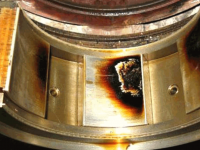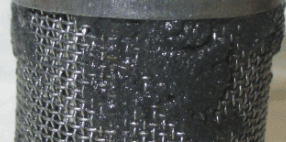Identify Varnish Potential and Avoid Unexpected Downtime
The lubricating oil in gas turbines and hydraulic systems is increasingly subject to the ravages of varnish. The debilitating effects of varnish are well documented. The complexities associated with detecting varnish potential render routine oil analysis ineffective in reporting varnish. However, there are a number of technologies, although seldom used, which have been successful in reporting incipient varnish potential.
Insight Services has developed a Varnish Potential Analysis test that incorporates these technologies into one simple report to offer an integrated varnish potential solution.
What is Lube Oil Varnish?
Varnish is an insoluble film composed primarily of organic residue that coats the internal components of machine lubrication systems. Often comprised of degradation products associated with oxidation or thermal degradation, these soft contaminants are less than 1 micrometer in size.
Causes of Lube Oil Varnish
Oxidation: a chemical reaction of an oil molecule with oxygen to produce carboxylic acids.
Thermal degradation: a chemical change in the base oil molecules under high temperatures. Specific mechanisms of thermal degradation:
- Micro-dieseling
- Electrostatic Spark Discharge
- Hot Spots
- Reduced clearance zones affecting lubrication regimes. Often, this means a transition from hydrodynamic lubrication to boundary lubrication, which increases the wear rates of pumps, bearings, and gears.
- Increased friction in components. This friction will result in higher energy requirements and can cause valves to stick or seize.
- Higher operating temperatures. Varnish acts as an insulator, lowering the effect of heat exchangers and lessening the ability of the lubricant to cool. The impact of friction and reduced clearance zones also contribute to higher temperatures.
- Restriction or impedance of oil flow. Varnish can cause valves, strainers, and filters to clog.
- Increased wear rates. Varnish captures hard contaminants creating an abrasive surface that will accelerate wear. Varnished surfaces often appear like sandpaper when examined under a microscope.






